This week, we go back down under to explore the latest science from the land of kangaroos, bandicoots and the world's largest radio telescope - the square kilometre array. Chris goes on a tour of the universe from the comfort of the SciTech Planetarium, meets Nobel Prize-winning scientist Barry Marshall and the fluffy marsupials under protection at Project Eden. We find out why Australia is the perfect place to look further in to space than ever before, witness the battles between bee sperm and examine how tempting sharks with the scent of food can change their behaviour...
In this episode
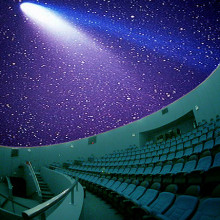
00:19 - A Ride Around The Universe
A Ride Around The Universe
with Carley Tillet, Horizon, the Planetarium, SciTech, Perth
Carley - My name is Carley Tillet. I work here at Horizon - the Planetarium - at SciTech in Perth, Western Australia, and every day we get to introduce people to the universe, which is a fantastic job!
Chris - Now I'm going to make a confession to you Carley. I've never been in a planetarium!
Carley - I can't believe that!
Chris - You're robbing me of my planetarium virginity. For people who, like me, have never set foot in something like this, can you paint a picture of where we are, what we are seeing and what's in front of us?
Carley - Okay, so you would have to imagine a really big 18-metre, domed screen. So rather than a flat television screen, this thing is like half of a sphere and you get to sit underneath it and we project images of the night sky and beyond, up onto this big gigantic screen.
Chris - So basically for the 150 to 200 seats that are in here, there's a white screen above us that is going to become a surrogate night sky that you can put stars on.
Carley - Not just a night sky - we can show the entire universe!
Chris - Shall we do it?
Carley - Yeah, I think we should.
Chris - So how does it work - because this looks like a mission control. I'm looking at this computer screen and to say "there's a few things to click" would be an understatement.
Carley - Yes, there are, lots of things to click and press. Part of my job is to program the software called DigitalSky by Sky-Skan and I get to input 3D models and show really hardcore astronomical data sets. But usually, for a planetarium presentation, we start with the simple stuff - a sunset scene - just so people can get a little bit comfortable before we plunge them into darkness and we can see the Sun setting and the stars in the night sky as they will be tonight in Perth, at about 8 o'clock this evening.
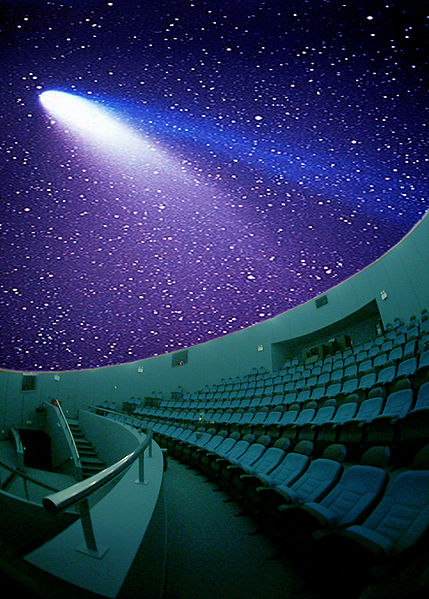 Chris - So, could you recreate the UK sky-scape for me here?
Chris - So, could you recreate the UK sky-scape for me here?
Carley - Surely could.
Chris - So you can do pretty much what the night sky would look like from anywhere on Earth?
Carley - Yes. Do you want to go to the South Pole?
Chris - Yes. I've never been there either.
Carley - It's a day of discovery.
Chris - So how is this working? How does it know what to put where? Because I can just see millions of little dots of light appearing on what is a surrogate sky above me.
Carley - Indeed. Basically, we have six projectors that each project onto a little kind of pie slice of the dome and there are six computers that run each of the six projectors, and then one that controls them all. And that's the screen that you're seeing right now. It's the main control computer.
Chris - It's sort of a lot of computing power, isn't it? But I guess that's needed.
Carley - Indeed. Definitely, especially to achieve the resolution - so the ability to be able to see pictures that aren't pixelated and all horrible. So we can show a really, really nice image, and people can get a really quite good idea of what's up there in sky. So this is the South Pole at night time.
Chris - So how do people react to this when you show them this? How do they react?
Carley - It depends on how old they are. Children tend to be very excited, especially when we do things like spinning. Adults think it's, you know, quite awesome and inspiring. Sometimes they don't like the spinning so much, but I think there are many adults that might grumble but we know they enjoy it.
Chris - Some people say it's quite disorientating because you end up gazing upwards, and because there's no reference point because it's dark, you end up being quite giddy.
Carley - That's true and - well, it can make people feel giddy. It's also one of the most amazing points of having especially a tilted dome - like we have here - is that people can feel within the scene. So, at the moment, you're seeing Earth on the dome and I've actually pulled us up into space and if I just rotate around, you can actually feel like you're in space, looking back down on the Earth.
Chris - Wow! So how far back from - I should just explain - so we've now zoomed off of earth's surface, we're out in orbit somewhere - so how far away from planet Earth? I can see this giant planet projected in front of me. How far out are we?
Carley - About 18,000 kilometres.
Chris - So that's not quite as far as, say, a satellite that would bounce geostationary images back for TV and stuff, is it?
Carley - No. They are about 36.5 thousand kilometres out. I can actually show you.
Chris - Oh Gosh! So now you're projecting all the junk that's orbiting the planet.
Carley - Yes. This is space junk, our wonderful trash in the sky. Which sounds kind of funny at first, but it really isn't especially if you're an astronaut in the International Space Station which we can see here. It orbits around the Earth about 350 - 370 kilometres above the Earth. The astronauts on board sometimes have to move up into the Soyuz capsule, just in case a piece of space junk crashes into the International Space Station, which is a little bit scary.
Chris - But looking at this picture there are literally thousands of white dots representing debris up in space. How many objects are there up there, man-made objects in orbit now?
Carley - There are over 800 working satellites, but as for space junk - it's almost uncountable. There are so many chunks of space debris - from old satellites that are no longer working, to paint flakes and nuts and bolts that have fallen off, and even some countries have decided to send missiles towards an old defunct satellite, turning into - what was it - twenty five or twenty-six thousand individual little pieces hurtling around the Earth at more than twenty-six and a half thousand kilometres per hour. It's a bit of a mess up there.
Chris - Are we in a position where people are beginning to say, "Look, we're making a mess as well as at the Earth's surface, also at the Earth's orbit, and we're going to have to clean this up at some point." Is this actually harming astronomy?
Carley - Not so much astronomy but certainly it puts a lot of satellites at risk and satellites are not cheap. We're talking about billion dollar instruments - whether they're for Earth observing or for our cable TV - sorry, satellite TV even!
Chris - It would be a long cable, wouldn't it?
Carley - It could be a very long cable. Yeah, that was a bit of a mistake. So yeah, there are lots and lots of satellites up there and there is a lot of work going into researching how we might be able to stabilise some of the orbits of some of the older satellites, but also how to basically clean up our act, up there in space.
Chris - So could you also use this to begin to understand more about the relationships between objects in space, and the Earth, other planets, and so on?
Carley - Absolutely and even next week, I've been working on a production with an artist called Dave Carson and he's been working with Janos Hennicke who spends about three months per year on Christmas Island, tracking Abbot's Boobys and Frigatebirds, which are birds that travel these massive distances. So I've been able to visualise data from Janos' tracking, to be able to show that these birds used to travel maybe just one day at a time to catch their fish feed, and now they're having to travel two or three days to get that same feed. So we can show not just astronomy but of course other science. I think it really gives people a great perspective when you can actually can look from above at these kinds of things.
Chris - Ah so you can actually plot information on something like this, relative to the Earth's surface, and use the power of this kind of projection system to - it's like doing a massive google maps mash up, but you've got the world's best projector - isn't it?
Carley - Pretty much. Certainly got the best computer screen and what more could you ask for? Eighteen metres of domed goodness - it's a pretty cool place!
Chris - So not just for pretty planets. Carley Tilett, talking to me at the Scitech planetarium in Perth. And that spinning that she mentioned is actually a vertiginous trick that she's developed to rotate the picture you're seeing, several times a second, which makes you feel rather like a human bowling ball, spiralling through space. So, do take some anti-sickness pills before inviting her to show it to you.
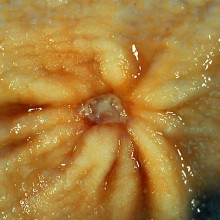
08:20 - The Man Who Ate His Own Experiments
The Man Who Ate His Own Experiments
with Barry Marshall, Q.E.II Medical Centre, Perth
Chris - Now from the depths of deep space to the depths of your stomach, and if you've ever been afflicted by an ulcer or gastritis, here's the man who won a Nobel Prize for discovering the bacterium - Helicobacter pylori - that is responsible.
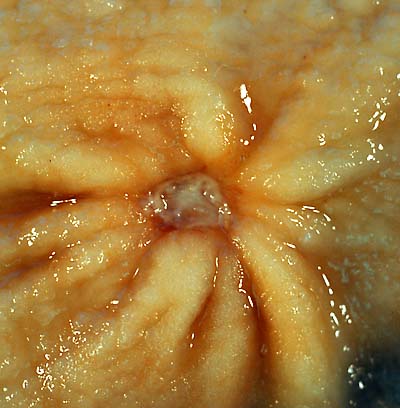 Barry - I'm Barry Marshall. Here I am at the Q.E. II Medical Centre in Perth. It began in about 1981. At that time, I suppose I was 30 years old, and I met up with Dr. Warren who had seen these curved bacteria on stomach biopsies - he's a pathologist you see. And so there was a curiosity for us to investigate this further: How come bacteria can live in the stomach which is supposedly full of acid and kills bacteria? So nowadays, we know that bacteria can live in hot springs, but that was pretty much new stuff in 1981. And so we set out to perhaps identify and culture these bacteria and I went off to interview all the patients that had them on the biopsy to see what was wrong with these people.
Barry - I'm Barry Marshall. Here I am at the Q.E. II Medical Centre in Perth. It began in about 1981. At that time, I suppose I was 30 years old, and I met up with Dr. Warren who had seen these curved bacteria on stomach biopsies - he's a pathologist you see. And so there was a curiosity for us to investigate this further: How come bacteria can live in the stomach which is supposedly full of acid and kills bacteria? So nowadays, we know that bacteria can live in hot springs, but that was pretty much new stuff in 1981. And so we set out to perhaps identify and culture these bacteria and I went off to interview all the patients that had them on the biopsy to see what was wrong with these people.
Chris - What made you think there might be something in the clinical history that'd be worth investigating? Why did you decide to follow that up? Because it would've been easy to just say - oh there are some bacteria in the stomach - maybe we missed them before.
Barry - Well, they were new so obviously there was no knowledge about them, so we had to exclude the possibility that they were causing a disease. And when we did interviews with people we found that there were one or two symptoms that seemed to be connected in some way. Dr. Warren knew already that they caused inflammation in the stomach - which was gastritis - but the teaching was that everybody got gastritis if they lived long enough and who knew what was caused by spicy food, or smoking, or alcohol, or some of the hundred different explanations?
But according to his pathology results you really had to have the bacteria to have gastritis. So we then set out to find - what about people who don't have the bacteria - do they have white cells in the lining of their stomachs? Do they have any symptoms? And we went off with open minds just trying to find out what the patients would tell us, and we came back with nothing initially because people could have indigestion, or belching, or dyspepsia, or nothing, or anaemia, all kinds of weird things, or ulcers, but nothing came out in our pilot study.
So we said - okay let's do it properly now - we'll do a prospective study. We'll look at 100 patients, we'll take every single patient having an endoscopy down - so a very big mixture of people. It was done blinded, so you didn't know what was wrong with them or what the results were, and when we looked at the results, the ones with ulcers had the bacteria far more commonly than just anybody else. So that was a significant result, and that was a year later that we had that result and we had already studied the literature, and it all fitted together all of a sudden. Hang on a minute - maybe ulcers are not caused by stress. Maybe they're caused by a germ in the stomach! Nobody had ever thought of that, because supposedly you couldn't actually have bacteria in the stomach because the acid kills them. So once you say - well that was wrong - all of a sudden it's wide open.
Chris - The question is though - it's one thing to say there are bacteria in the stomach and there's an ulcer, but how do you resolve the question - the bacteria are there because they've caused the ulcer, rather than the ulcer has made the stomach environment change in such a way that it now allows these bacteria to persist?
Barry - I'm getting déjà vu because that's exactly what people used to say who didn't believe us. And so we said - we have to prove that these bacteria are harmful or harmless. And of course, that is an experiment called Cox's postulates, where you have to infect an experimental animal with the bacteria. But sadly, we didn't have a successful experimental animal, so we had to then look for human volunteers. And Warren and I discussed this and he couldn't be a volunteer because he'd already had Helicobacter and I had treated him, so he would've been a bad choice, and I hadn't had them.
So it fell upon me to do the experiment. So I did drink the bacteria - a few tablespoonfuls - not very much, and it didn't really - well actually, it's not published yet, so I won't tell you what it tasted like! It wasn't too bad. So then I was just waiting to see what would happen. By then I knew that there were lots of people who didn't have ulcers who had the bacteria, so I was there like - I suppose nothing will happen because none of my ulcer patients can remember catching a bacteria, so probably they're not going to cause any problem. So I was of course surprised when about five days later, I woke up and ran into the bathroom and started throwing up, and I was vomiting for about three days. There were a lot of vague symptoms but nothing that you could really hang your hat on. And then after that I was okay, and the endoscopy was done. And sure enough, I had millions of these bacteria, thousands of white cells all trying to eat the bacteria - so it was really a bacterial infection that I had in the stomach. So that answered this question that said - healthy people with nothing wrong with them could catch this bacteria and then get inflammation in the stomach -called gastritis. So that was then the soil upon which an ulcer would form later in life, and so we connected the whole story up at that point.
Chris - So what is the bug actually doing and why is the immune system not dealing with it?
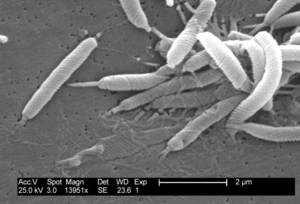 Barry - Well, it's a bit like D-day. All the ships are parked offshore, out of range, firing at the coast - and so Helicobacter is like that, living in a mucus, hammering away at the epithelial cells, making them a little bit leaky, so that they leak iron and nutrients up to the bacteria, so that's the happy status for the bacteria. As soon as you get too many white cells migrating through the epithelium in the stomach, it's starting to develop holes in it, it becomes leaky, acid goes down, and you develop an ulcer. So that would be disadvantageous for the bacteria. They don't want to kill you because then they can't propagate.
Barry - Well, it's a bit like D-day. All the ships are parked offshore, out of range, firing at the coast - and so Helicobacter is like that, living in a mucus, hammering away at the epithelial cells, making them a little bit leaky, so that they leak iron and nutrients up to the bacteria, so that's the happy status for the bacteria. As soon as you get too many white cells migrating through the epithelium in the stomach, it's starting to develop holes in it, it becomes leaky, acid goes down, and you develop an ulcer. So that would be disadvantageous for the bacteria. They don't want to kill you because then they can't propagate.
So a successful bacteria lives in sort of symbiosis. So what they want to do is keep the inflammation going, but not so vigorously that you'd die from a bleeding ulcer. So an ulcer is actually [when] the bacteria is a bit over zealous, if you like, in harming you, it doesn't want to do that. It has toxins, and one of these toxins called the VacA toxin probably down regulates the immune system. So as soon as you get too many holes in the mucosa, this stuff would be leaking into the lining of the stomach and inhibiting the proliferation of the white cells. So that's the kind of thing that it would be doing. So your immune system then is a bit paralysed and doesn't actually become more vigorous as it would do. So, you can imagine maybe 500,000 years ago, the first Helicobacter infects humans - it is too dangerous and the poor old humans probably die from bleeding ulcers. However, one of the Helicobacter mutated and developed this immune suppression system and got the right balance, and now we all have Helicobacter all our lives, or we used to, but in the last 100 years it has decreased to about 25% of population in most countries.
So you can pick it up as a child and it sits there, controlling the immune system, regulating it for the rest of your life. And so it's a very mild irritation in the stomach, and most people don't know that they have it. 10% of people at some time in their life develop ulcers and that is a major event because ulcers then come and go. So it would put you in the high list acid level and then if you have Helicobacter all your life, that irritation and inflammation attracts stem cells floating past and these stem cells try to fix up the problem in the stomach, trying to make it heal, and they're proliferating and they are subject to hits by carcinogens that you might eat, so you do get 1 or 2% chance of having stomach cancer if you live as long as a Japanese person - you know, 80s or 90s.
Chris - Barry Marshall - the man who ate his own experiments to prove that the bacterium Helicobacter pylori can cause stomach inflammation, ulcers, and even cancer. And Barry also told me that he's now working on a way to produce tamed forms of that bug, that can be used to deliver vaccines against other diseases like the flu.
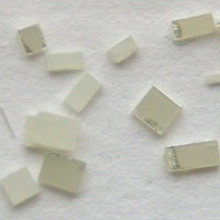
16:40 - Generating Hydrogen from Solar Power
Generating Hydrogen from Solar Power
with Leigh Sheppard, University of Western Sydney
Chris - Embarrassingly for the average Aussie, as a nation, they're amongst the worst emitters of greenhouse gases on a per capita basis of any country in the world. So why aren't they making more use of all that lovely sunshine they enjoy? Leigh Sheppard...
Leigh - We're interested in generating alternatives as a substitute for fossil fuels. So, we're focusing on splitting water to produce hydrogen from sunlight using various catalyst materials.
Chris - How are you doing it?

Leigh - We're using a material based on titanium dioxide which is a very common material that's in a host of common things like white paint, sun cream and toothpaste. It's a metal oxide, so there's metals and there's oxygens. If we change the ratio of those metals to oxygens, we change the properties. So, we take our material, we put it in high temperature, various gas atmospheres, and we're able to sometimes suck oxygen out, and sometimes impose oxygen in. As a result, we have titanium dioxide that's a little bit tweaked. A little bit different from what you would get normally and it has different properties as a result.
Chris - So you fabricate the structure then you illuminate it in the presence of water, and it degrades water molecules, and yields hydrogen and oxygen.
Leigh - That's exactly right, yes.
Chris - So practically speaking, how does it actually work?
Leigh - Okay, what happens is, when the sun or any light source illuminates the titanium dioxide, some of that light, the high energy part of that light, forms electronic charge carriers - like electricity inside the material. Once that happens, we drive essentially electrochemical water splitting. So it's like an old fashioned beaker with two copper electrodes, plugged into a power point somewhere and you split water, same sort of experiment we're doing except that one of those electrodes can't be copper. It has to be a material that's powered by the sun.
Chris - And that's the titanium dioxide.
Leigh - That's right, yes.
Chris - So you make some electrons or a surplus of electricity in one of the electrodes, harvest that off and then use that to split the water.
Leigh - Yeah. In simple terms, that's exactly right.
Chris - So this is a way of basically producing clean hydrogen.
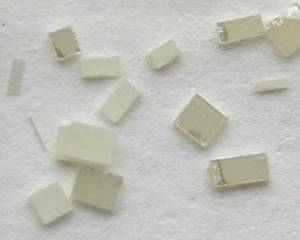
Leigh - Yes. One of the problems of hydrogen today is that it predominantly comes from natural gas. So while hydrogen itself, if you had that in a car, you'd be driving along and only steam is coming out of the back, you can feel good about yourself, but that hydrogen has come from a dirty source. It's come from a carbon source. We want to break that link and we want to produce hydrogen in a way that's entirely free of carbon emission.
Chris - Can you do it in a way that's economical and also, environmentally sustainable though? How much hydrogen can you make?
Leigh - This is the challenge. It all comes down to performance and for us, this is early days. It's an important project. I think it has important consequences for the future as we all rely on energy, but it is early days and it's about lifting performance, and absorbing more sun, and splitting more water. That's what it's all about.
Chris - But how much can you make? In other words, how much sunlight do you need to make hydrogen that would be sufficient for me to run my car to get me to work?
Leigh - Well, this is the question that comes back to efficiency ultimately. At the moment, efficiencies are very low. It's not practical at this stage to split water using sunlight to drive something like a car. It's too early a technological development to do that sort of thing.
Chris - So what makes you think that titanium dioxide's the way to do it? There must be other materials that are better.
Leigh - The virtue of titanium dioxide is that it is highly corrosion resistant. There are a number of other materials that have better abilities to absorb sunlight, but of those materials, they're either extremely expensive or they don't last long in an aqueous environment. You need to start with an oxide essentially and like I said before, it's all about changing the properties of this material. You start off with something that's corrosion resistant and abundant and cheap, but it has its drawbacks and that's what we are about addressing.
Chris - And so, what would be the long term goal of this? Would you have some kind of centralised system where you have big arrays of panels that would make enormous amounts of hydrogen which you then distribute or could you see this even being practical on a domestic basis where people make homemade hydrogen that then powers their home, powers their car, and so on?
Leigh - What I would like to see would be a situation where people can take a bit of control over the energy production as well as energy consumption like we have now. Whether this is something that is favourable on a big scale, time will tell. This is just my personal preference at this stage.
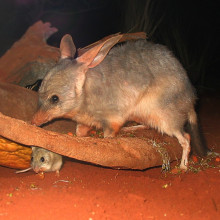
21:26 - Project Eden - Rebuilding Australia's Native Fauna
Project Eden - Rebuilding Australia's Native Fauna
with Brett Fitzgerald and Colleen Sims, Project Eden
Chris - You may not have heard of a Bilby, but believe me, these mini marsupials are extremely cute. But they're also an endangered species in Australia alongside many of the country's other native fauna, largely owing to feral animals, like cats and foxes, that have been introduced from Europe. But now, a major initiative called project Eden which is based in the Francois Peron National Park in Shark Bay, Northwest Australia, has been set up to tackle the problem by returning a patch of the country to what it would've been like before rat and cat bearing European settlers arrived on the scene.
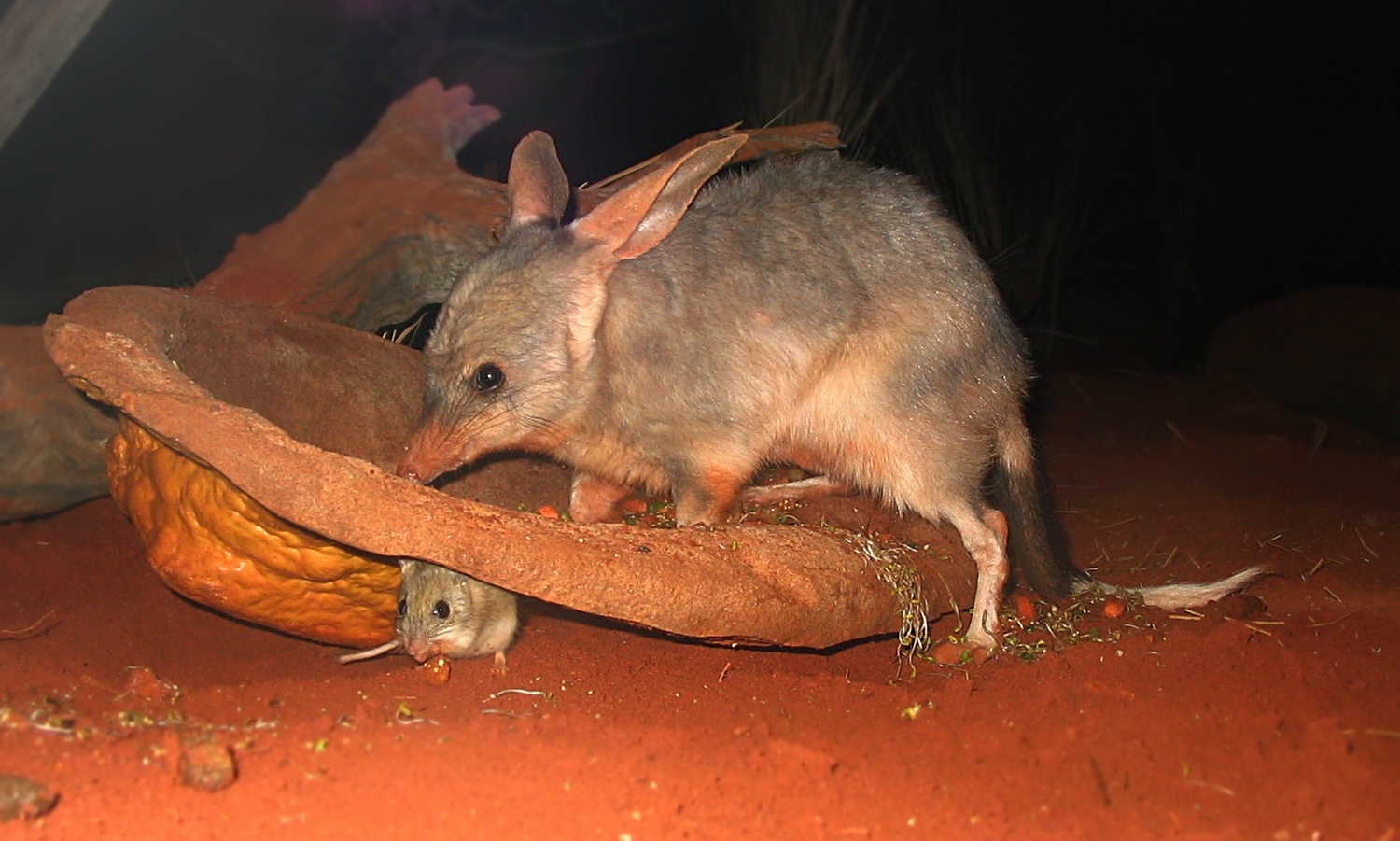 Brett - I'm Brett Fitzgerald. I'm the District Manager for the Department of Environment and Conservation in Shark Bay District. The aims for project Eden is to reconstruct the original native fauna on the Peron Peninsula within Shark Bay. So that's done through a combination of getting some information on what species were here originally, then managing the actual pressures that are on those species, the ones that were remaining and the artificial pressures that possibly pushed some of the others to extinction.
Brett - I'm Brett Fitzgerald. I'm the District Manager for the Department of Environment and Conservation in Shark Bay District. The aims for project Eden is to reconstruct the original native fauna on the Peron Peninsula within Shark Bay. So that's done through a combination of getting some information on what species were here originally, then managing the actual pressures that are on those species, the ones that were remaining and the artificial pressures that possibly pushed some of the others to extinction.
Chris - And what were they?
Brett - The main pressure that we've seen on, not only the Peron Peninsula but across Australia, is the introduction of feral predators. The feral cat which has been around for longer than foxes, but in synchronisation with that are species such as rabbits which have provided a prey source and a food source for the introduced predators. This lets them build up to numbers, and then what appears to have happened is we have a crash of those introduced prey species, such as the rabbits, and then the predators are at such large numbers that they move across to what are possibly remnants of smaller populations of native animals and push them towards extinction.
Chris - So why have you chosen this site to try this experiment, to try to make this happen?
Brett - Across a lot of Australia where we've seen native animals survive, native species survive, has been on an island environment because we haven't had the feral predators introduced. The difficulty with working on islands is simply access. They're remote and logistically they're difficult places to work on. Peron Peninsula inherently was a mainland island. It's 100, 000 hectares, so it's 1,000 square kilometres, but there's only a narrow neck, about 3.2 kilometres wide which connects that large peninsula to the mainland. So by fencing that off, controlling feral animals inside the enclosed area, we can limit the potential for re-invasion and I guess, get the best value for money for the eradication programs.
Chris - What have you done in terms of getting rid of those nuisance animals that us Europeans brought here a couple of hundred years ago?
Brett - We've controlled the large herbivores. So, species such as feral goats and sheep, and Peron before it was purchased for conservation was an operating sheep station and goats were not really used commercially in those early days, but they were present here as well. So that's a combination of mustering, trapping and eradicating those species. They're large. They tend to come to water in summer, so they're relatively easy to control. Then we had red foxes which are the common space in Europe, but introduced to Australia. They tend to be relatively easy to control by a naturally occurring poison placed in a bait here. So, the estimates were between 2 and 3,000 foxes on the Peron Peninsula before control commenced. We have the occasional one that might sneak through the fence or sneak around the fence, but we're in the order of single figures of foxes in the peninsula. The fourth major species that would be in looking and controlling is the cats. Unfortunately, control of feral cats is an incredible challenge. They've got a great breeding capacity. They don't need to drink water. They are quite adaptable with the pride they select. So they're a difficult nut to crack in a sense as far as eradication goes and they've proved a big challenge - as have rabbits. The rabbit population here tends to fluctuate with season. We have periodic outbreaks of natural diseases such as myxomatosis which depletes the population, but rabbits have an incredible breeding capacity, and even when the numbers are suppressed, once we get some reasonable rainfall, they bounce back, and they're also an issue.
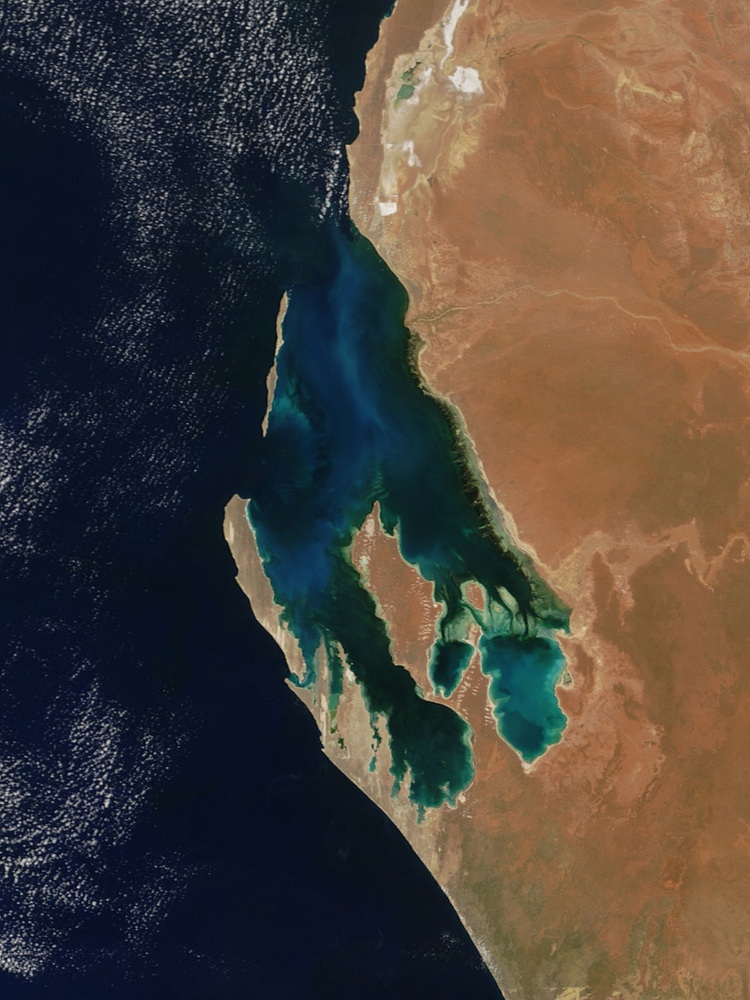 Chris - Brett Fitzgerald.
Chris - Brett Fitzgerald.
---
Chris - And apart from just eradicating the feral animals to let the plants and native species recover, project Eden also has a captive breeding program to help kick start the process. Colleen Sims...
Colleen - Let me show you here one of the animals that we've been breeding. This is a Bilby or more correctly, it's called a Greater Bilby. These guys used to be very common across Australia, around about 70% of the country. They are a marsupial and a burrowing marsupial, so one of the unusual things about many of the burrowing marsupials is they have a pouch that points backwards, so they don't fill them up with sand when they dig.
Chris - That could be a disadvantage, couldn't it? It's about the size of a rabbit, isn't it?
Colleen - That's right.
Chris - It's like a small rabbit.
Colleen - Yup and as you can see, the very long ears, one of the common names was Rabbit-eared Bandicoot. The Bilby is one of the bandicoot family. They're actually omnivores rather than a herbivore like a rabbit, so they'll eat anything from seeds, root tubers, insects. They also have been known to eat mice and small geckos and things too, so they'll pretty much go for anything that gives them a good feed. They have some fairly sharp teeth obviously, considering the array of food they eat. The other thing that's a dead giveaway for their behaviour is if you look at their forearms, they've got very strong short forearms and very long claws for digging on their front feet. They can go along on a fairly good clip. I guess it's fairly similar to a rabbit gait in fact, a sort of a half hopping gait to start with and once it gets faster, it will actually really get running. They are nocturnal so they live in burrows during the day, anything up to about two or three meters deep, so they can move a lot of sand and move it very fast. They actually were a fairly common food source for the aboriginal people and still are in some of the remote desert regions, but it takes a lot of effort to actually dig a Bilby out of its burrow.
Chris - So given they can hide underground, why are they particularly vulnerable to things like cats and foxes then?
Colleen - Well, the reality is they probably are one of the less vulnerable. The fact that they actually do still exist and persist in Central Australia at this stage means they're doing a lot better than many of the other species we previously had here. That doesn't mean they're immune and there's certainly ongoing concerns that they may still be slowly shrinking in numbers. Because they're nocturnal, because they are omnivores and move about the landscape depending on food sources, it's quite difficult to monitor them. Often, you can return to an area where there was quite a thriving Bilby colony and several years later, they aren't there anymore, and it does create problems to work out whether those animals, that population, has actually gone extinct or whether it has moved somewhere. But there's certainly ongoing concerns that even though they were persisting in the desert areas, that population and range may still be shrinking.
Chris - So when you want to breed an animal like this in captivity, what does that actually involve?
Colleen - Obviously, it initially involves getting the original animals from the wild and setting up a program. We have a fairly intensive management program here to try and manage the distribution of the genetics through the breeding population. These guys are actually comparably easy to breed. They've actually been partially adopted in Australia as a replacement for the Easter bunny. Obviously, the similarity and appearance makes them quite convenient for that, but also because they are actually quite a rapid breeder, so the fertility aspect is actually carried on. so we have an Easter Bilby these days in Australia and will usually get anything up to three or four litters out of these guys in a season in a year. So, they'll produce usually a litter of two, but anything from one to three. We will usually, based on some advice from the national stud book that gives us an idea of the relationship of various Bilbies we have in our colony, will pair a male and female. They may stay paired for most of their time here. Once we've had three or four litters, we might actually want to move pairs about and re-manage their pairings and the genetic lines from that.
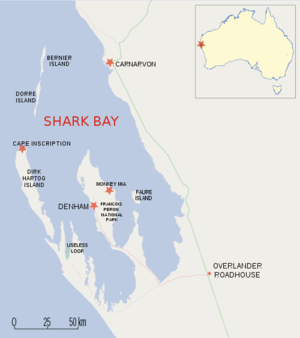 Chris - So when a baby pops out, it first of all goes into this backwards facing pouch. How long does it spend in there?
Chris - So when a baby pops out, it first of all goes into this backwards facing pouch. How long does it spend in there?
Colleen - The Bilby, as I mentioned earlier is a bandicoot. They actually have a really rapid reproductive rate. Their gestation is only about 10 days, so as with most marsupials, the foetus comes out very small and very underdeveloped, and they then spend around about anything from 65 to about 75 days in the pouch.
Chris - And are they sociable? Will they hang around with a family group or do they go off on their own and act independently as soon as they get out of the pouch?
Colleen - They'll usually spread out and disappear. In fact, some might think there's a great idea we should do with our kids, but the Bilbies, the females actually will leave the burrow, the home burrow to the kids. So she's the one who basically leaves them after around about two weeks after they've come out of the pouch.
Chris - Colleen Sims, who's a vet and project officer with Project Eden.
---
Chris - But apart from the important task of increasing the numbers of endangered species, there have also been some other surprising discoveries. Brett Fitzgerald again...
Brett - It's interesting to actually watch the re-introductions, it's so much more than just putting back the small furry animals. When you actually look inside the breeding pens of the Bilbies and when you look at areas where they're being re-introduced, these actual deeper diggings that they do, you can actually say then why that functions as part of the ecosystem. A lot of the seed that's distributed in Australia is airborne and wind driven, and you'll actually see in these deeper holes that Bilbies dig the actual seed fall into the bottom of the hole then having some dirt below over the top of them. So as far as driving the ecosystem, as far as plants germinating and getting a chance to survive, you really see the function the animals play as much as just their presence in general. Water penetration; when you look inside a Bilby pen or around a Bilby related area, you may have these shallower rabbit diggings, but the Bilbies really turn the ground over. When we have a rainfall event after that, the capacity for rainfall penetration - water to actually soak into the soil rather than runoff and disappear is that much increased by the presence of these animals. So, that's been a really interesting part of the project. It's not just to see the animals back in their natural environment, but to actually see the ecosystem function they played.
Chris - Do you think it's been successful though?
Brett - I think we've had some real successes. Some of the species such as Malleefowl, from the process of going and collecting eggs to actually hatching those eggs, to releasing those birds and then actually going in and finding active breeding mounds on the Peron Peninsula. Some of those species, Bilbies included, we've seen real success and it has essentially made Peron a site where we can potentially take those animals bred here to other locations and really use this as a launching pad. It's been challenging, and feral cat control is a challenge, but as well as the effect of control here, the other things we've learned is better techniques. So, it's a learn-as-you-go process with some of the species and some of the feral control. The techniques that we've developed here and the things we've learned about cat behaviour have been able to be applied, not just in Australia but in other parts around the world. So, I think we've had some real success with the species re-introduced here and we've learned things that have been able to be applied in other places.
Chris - Brett Fitzgerald from project Eden in Shark Bay Western Australia.
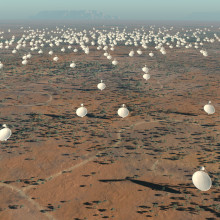
32:51 - Seeing Farther than Ever Before - The Square Kilometre Array
Seeing Farther than Ever Before - The Square Kilometre Array
with Peter Quinn, International Centre for Radio Astronomy Research, Perth, Western Australia.
Peter - The world - 20 countries and radio astronomers in them - are trying to build the world's biggest radio telescope. It's called the Square Kilometre Array. It's a poor choice of name. It's not square, it's not a kilometre-long. It's different.
If you look at a radio telescope, say like Parkes [observatory in New South Wales] the famous dish that we seen in the movies, right? It's an eyeball. It's 1,000 square metres of metal dish which collects radio waves, focuses them into a point and there, it's turned from analogue to digital, and makes images basically of the sky. That telescope is really good to look at the local universe, the universe immediately around us. The galaxies and clusters of galaxies we can see on pictures that most telescopes take. The biggest radio telescope we have which is about 10,000 square metres, so about 10 times the collecting area of the Parkes dish, pushes this out to kind of the very edge of detectability of galaxies.
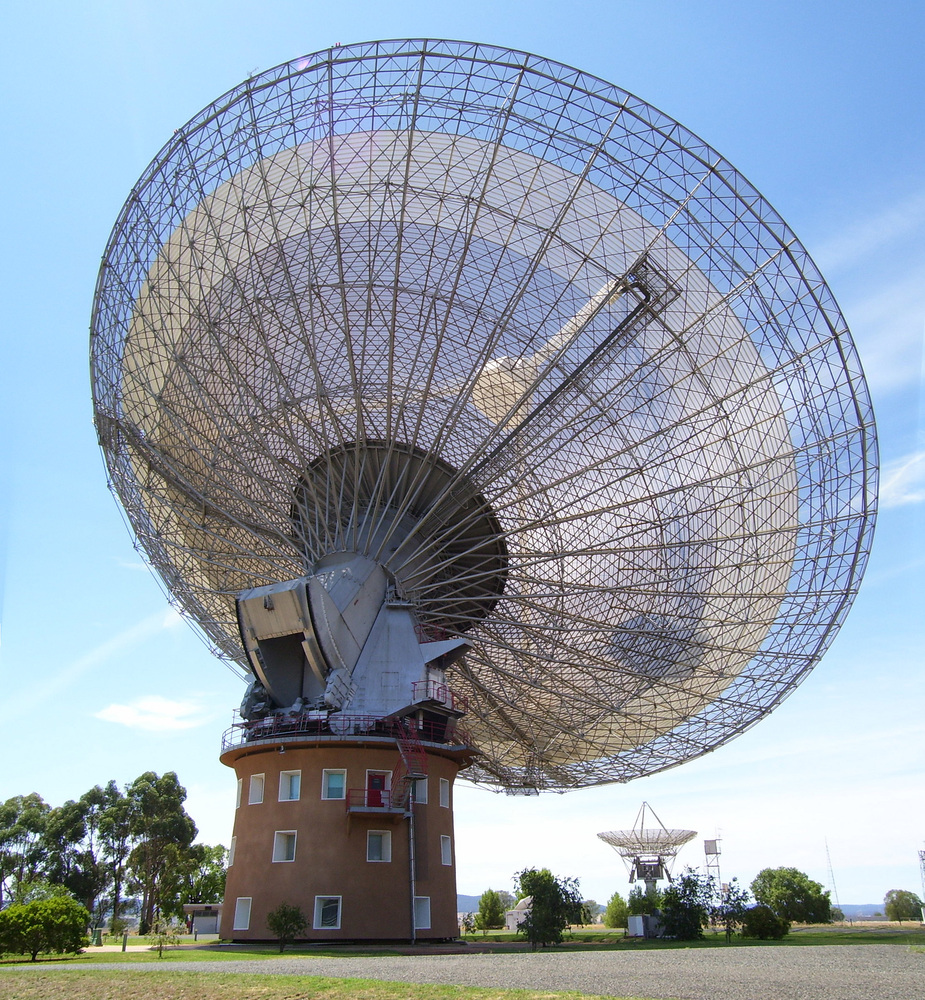 If you were to draw a ruler out into the universe from here where we are today - we'll call that zero on the ruler, where on the ruler could you get to with our biggest radio telescope? The answer is one unit out there. We'll call the farthest we can see right now one unit. So, where would we really like to be able to see to into the history of the universe? And the answer on that scale from zero to one, we would like to be looking at 10. Effectively 10 times further out into the universe than we can see at the moment.
If you were to draw a ruler out into the universe from here where we are today - we'll call that zero on the ruler, where on the ruler could you get to with our biggest radio telescope? The answer is one unit out there. We'll call the farthest we can see right now one unit. So, where would we really like to be able to see to into the history of the universe? And the answer on that scale from zero to one, we would like to be looking at 10. Effectively 10 times further out into the universe than we can see at the moment.
So what's out there at 10 times further? Ten times further puts us in a point in the history of the universe when the very first objects formed. The universe began with a Big Bang, we know that and it was a very hot and sort of a gaseous place, and as the universe expanded, it cooled and starts to form objects, and those objects were the seeds of every other object that's ever been - the seeds of stars, the seeds of galaxies and planets, and what have you. So, that process of the universe cooling in the very first objects being formed happened at number 10 of this ruler we just talked about. So we can only get the one - you know, one unit on the ruler. We need to get on the 10. So that 10-point is sufficiently far away, sufficiently far back in time. It's effectively 10 times further than what we can currently see.
Why do we want to get there? If we can see the beginning of the story, then we know how it all turns out. It's like having a novel with the first few chapters ripped out. The Universe is a bit like that for us. We know the end of the story. We know we're here, we can see things around us, but as you look out into the universe, you're looking back in time. So you're looking back to the beginning of the story. And so, we're trying to fill in those blanks and we don't know how this story began. We don't know what the first objects were, what they look like, whether they were monster black holes or monster stars, or little tiny galaxies. You know, how did this process begin and then how did it unravel, how did it actually build up as time went by?
So, it's very simple. If you want to see 10 times further away, how big a telescope do you need? Unfortunately, it's 10 times 10. Ten squared because it goes like the area. So, 10 squared to 100 times bigger than the biggest thing we have right now. The biggest thing we have right now as I said is 10,000 square metres, the big telescope in the US - so, 10,000 times a hundred is 1 million square metres - which equals a square kilometre. So a square kilometre is exactly how much metal collecting radio waves we would need to amass together to be able to detect this incredibly faint signal from the very beginning of the universe.
Chris - And practically speaking, what's it going to take to do that because no one's going to build a dish like that? So how are you going to do this?
Peter - It's basically dishes. So the way we do this in radio astronomy is you make individual dishes. Each of those dishes could be 10 or 12 or 15 metres across and an ensemble of those dishes will then make up a square kilometres worth of collecting area. So, if you want, say, a square kilometre and you made it out of 15-metre diameter dishes, you'd need about 3,000 of them. So these 3,000 dishes have to be all built, all equipped with radio receivers and all that information has to be gathered and turned into images of the sky, effectively. Those dishes also have to be spread out. You can't just stick them all together inside a little corale. You've got to basically spread them out. And in fact, the further you spread them out, the better your picture. It turns out that the larger the separation of the dishes, the more resolution, the finer the picture, the finer the detail that you can actually make in your picture. So in fact, we would like to spread the 3,000 dishes across the distance, something of the order of 3,000 kilometres. So not only is it a large number of dishes, it's also a very large machine for doing science. It's the world's largest scientific machine almost 3,000 kilometres worth of stuff, all connected together with fibre optics doing fantastic science.
Chris - So, the major remit is a big country with a lot of open space that you can pack in 3,000 dishes. So Australia is perfect.
Peter - It just so happens Australia happens to be 3,000 kilometres across just by pure accident. But yes, you need a lot of flat, wide open space to be able to build this thing. You also need something else which is incredibly important. You need no people. You need to have silence on the radio spectrum front. The reason is obvious because the signal you're looking for is coming from the very edge of the universe. It's very, very faint. Everybody makes radio noise. Mobile phones, microwave ovens, electric fences, trucks, buses, cars, anything that has a spark plug or any kind of electrical connections makes radio noise. But we want to be able to be in isolated regions.
It just so happens that in this western part of Australia, we have, for example there's one place that's called the Shire of Murchison which is in the middle of Western Australia. It's a region, basically the same size as the Netherlands, so a country-sized shire. It's inhabitation is listed formally as no more than 120. So that means you have population densities that are around about 1 milliperson per square kilometre. Milliperson is like a big toe or two. So, that's the kind of population density you need, around 10-3 people per square kilometre. In Europe, you have about 10+3 people per square kilometre, so a million times less dense than Europe.
Chris - Okay, so we'll go to the idea with geography. But what about the data? How much data is each dish going to generate and what sort of computing power do you need to gather that data and then assemble it into a meaningful picture?
Peter - That's actually one of the most ambitious and challenging aspects of this telescope. Just to give you some for instances. Every year, everybody on the Earth generates data and how much data do they generate? Well every year, the Earth kind of generates around about what's called an Exabyte. So an Exabyte of data is one and 18 zeros, a billion, billion bytes of information. The SKA generates that amount of data in a day. So we're talking about something which outperforms the entire planet in terms of data generation. The other two sound bytes I like to give about SKA data is that in 2020, when this telescope could be operational, the data traffic inside the telescope, just inside the telescope systems, will be equal to the entire internet traffic in 2020. So take today's internet traffic expanded up to 2020, the telescope will generate the same amount of data. And finally, the computer system itself, the computer system we need to run the SKA and transfer all that data hopefully into knowledge will be the world's largest computer system - not today, but in 2020. So it's an incredible driver for the whole communications and information industry, and they're actually very interested in this project, exactly for that reason.
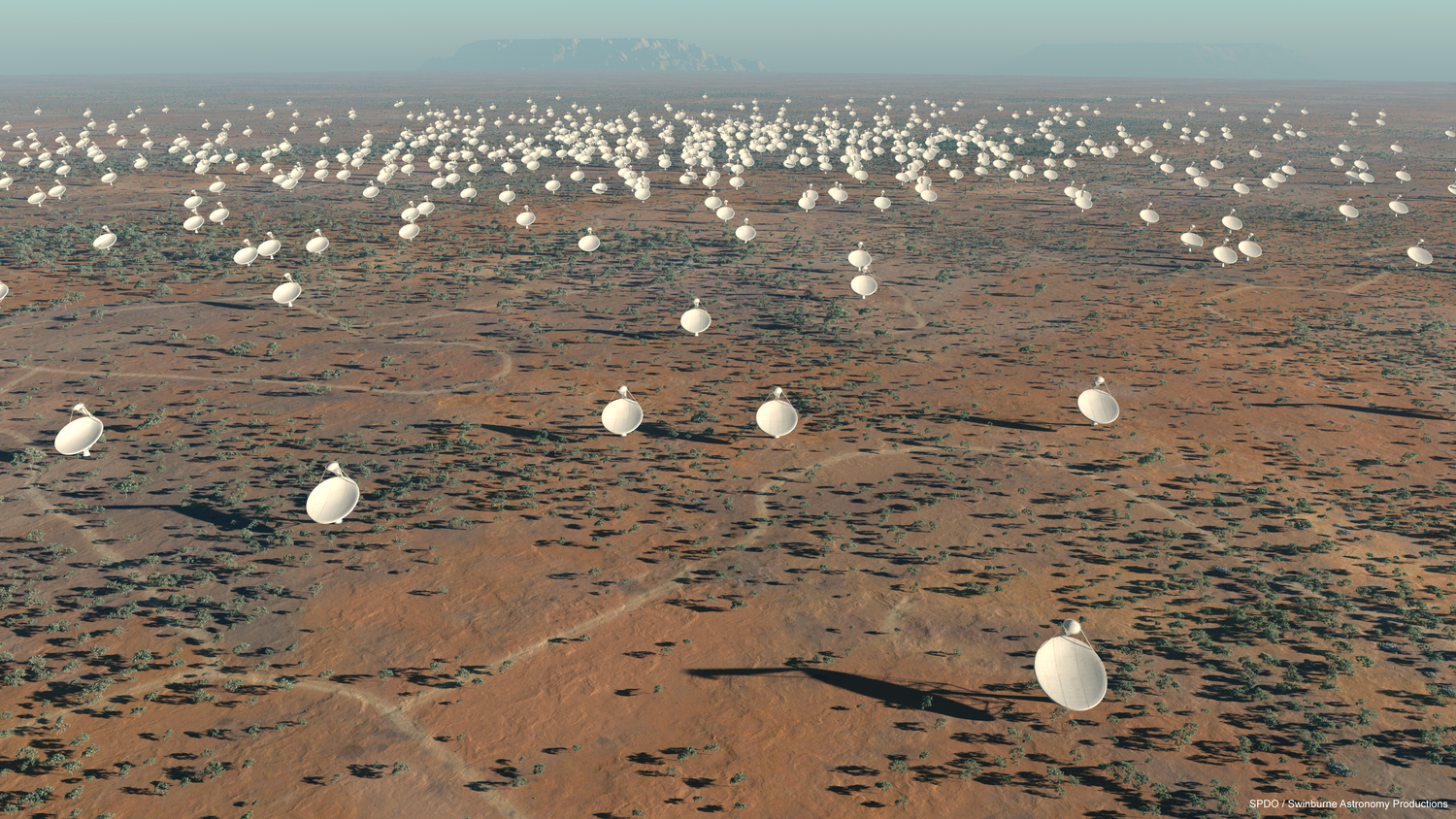 Chris - And how much is it going to cost?
Chris - And how much is it going to cost?
Peter - Cost is an important question too and as scientists we have to be very careful of that and I think in this decade in particular, we have to be very careful in the way we spend public money and actually cost the projects. We believe at the moment, it'll be approximately 1.5 billion Euros to build it and something in the 100 to 200 million Euros a year to actually operate. So that's the kind of costings we're working with right now.
Chris - So that's LHC, Large Hadron Collider level of funding, isn't it? So it's a lot, but it's not a massive amount when you look at the kind of impact it could make on scientific knowledge.
Peter - We believe that the impact of this project will be, I think Earth shattering is probably a good word, but - bear in mind the following have already happened. I mean, the LHC as a project from CERN - CERN, during the process of building that project, invented the worldwide web. Radio astronomy, even just in building the precursors, building the initial technology for the SKA invented the standard which now defines wifi. So, everybody uses wifi in the world, that standard came from radio astronomy. So, I think the commercial returns or the potential technological returns will be enormous.
Scientifically, this is a project which is truly unparalleled, I think. This is a project which has not happened before. If you take Galileo's telescope and you ask how big a step was that for mankind. To go from the naked eye to Galileo's telescope, that was about a factor of order 10 - 10 times better than your naked eye. If we look at the impact in the step that SKA will make, it's a factor of 10,000. Now, that's 1,000 times bigger discovery potential step than any subject has made before in the physical sciences. It's almost inconceivable what that means. Given what we've done in building the LHC and building other big experiments and how much advantage with advancement we've had, this is incredible step forward, and it's not so much for the things that we think we'll find, but for the things we don't know we'll find.
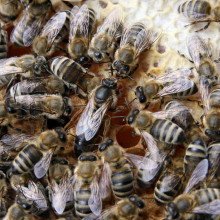
43:03 - Battles Between Bee Sperm
Battles Between Bee Sperm
with Boris Baer, University of Western Australia
Boris - Reproduction in honeybees starts very often when the colony gets fed up with the queen and they execute her, chop her into bits and pieces, and thrown out of the colony. They then use the last eggs which she has laid before, and they start to breed new virgin queens. And When they hatch they are normally separated for a while until everybody has hatched, and then they again fight against each other until one or very few are left. 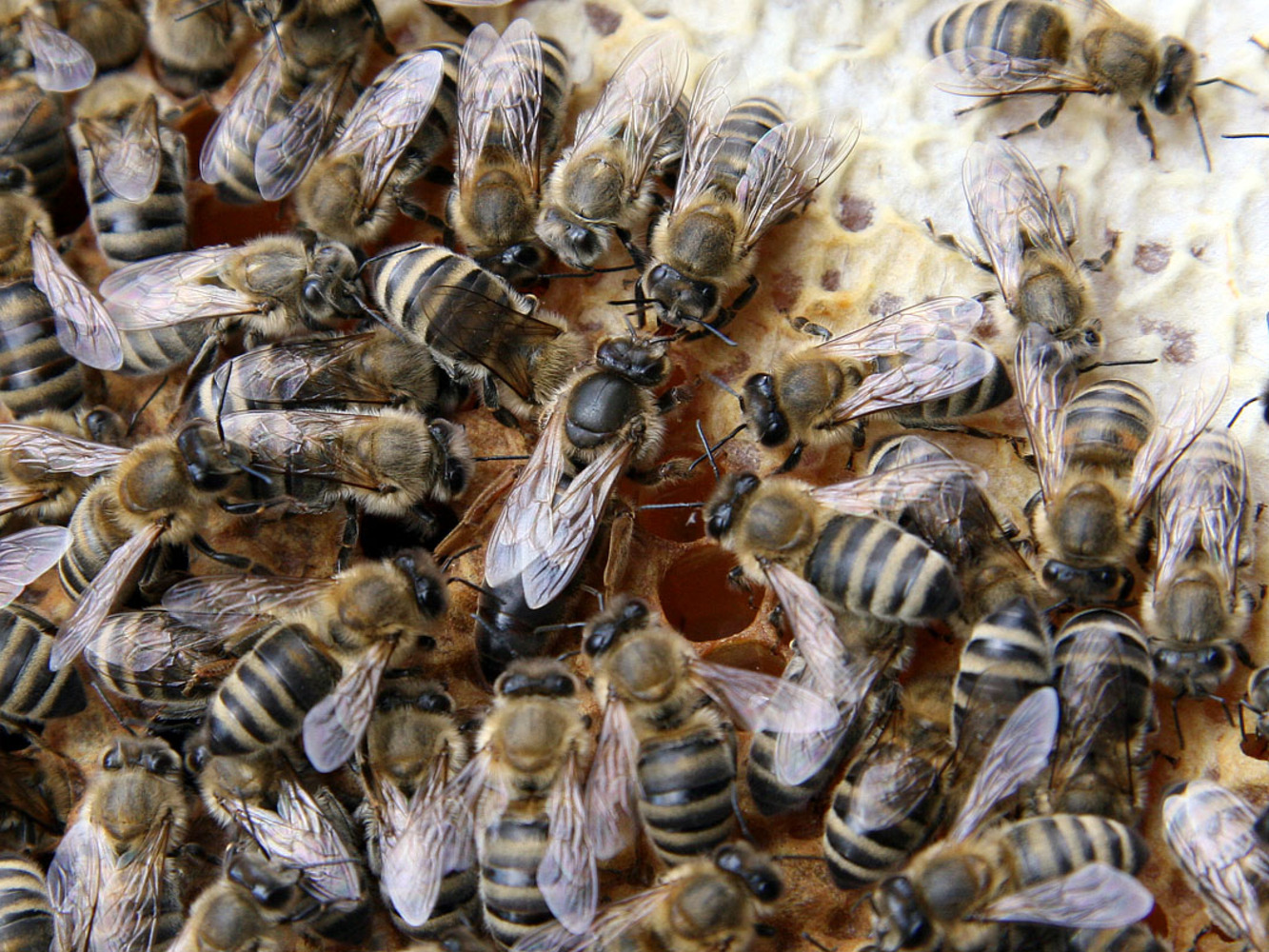 These queens then leave the colony for what we call a mating flight and they go high up in the air, they release a pheromone, a substance that attracts males, and the males come in large numbers. The ratio between virgin queens and males is really extraordinary in honeybees, about 16,000 males and one female. They all queue up behind her, forming what they call a comet, so they basically queue up for copulations. The female then copulates with about 200 of them, or up to 200 of them. She kind of basically just collects ejaculates, she goes back into the colony, and then she sorts these ejaculates out, but only very few, about 5%, of the sperm that she accumulates during her mating flight will ultimately be stored.
These queens then leave the colony for what we call a mating flight and they go high up in the air, they release a pheromone, a substance that attracts males, and the males come in large numbers. The ratio between virgin queens and males is really extraordinary in honeybees, about 16,000 males and one female. They all queue up behind her, forming what they call a comet, so they basically queue up for copulations. The female then copulates with about 200 of them, or up to 200 of them. She kind of basically just collects ejaculates, she goes back into the colony, and then she sorts these ejaculates out, but only very few, about 5%, of the sperm that she accumulates during her mating flight will ultimately be stored.
Chris - So does she then use that sperm that she selects for the rest of her life because queens can live a long time, years?
Boris - Yes. In honeybees, they can live up to 7 years, in other social insects which we work with they can live for decades. So we know that for example the ants which we use for comparative studies, they can live for about 20 years. They only mate very early in their life. Once they have laid their first egg, once they've initiated a new colony, they will never go out and mate again. This has very dramatic consequences on the female because they have to store immense amounts of sperm, millions and millions. They have to keep it alive for thoe whole time and they have to use it very prudently throughout their lives to fertilise eggs. And it's quite fascinating, how can females, how can queens do this so efficiently?
Chris - So are you any closer to understanding then how they sort out this sperm? How do they decide of all these 100s of matings? "I want that sperm and I'm going to use it in whatever order. I'm going to flick out that sperm, I don't want that." How do they do that?
Boris - I think we started to get first insights into these. The male doesn't only transfer sperm to the female. The male also transfers a secretion which we call seminal fluid or seminal plasma, and that seminal fluid consists of proteins, and when we looked at these proteins, we saw that they could be involved in little warfares between the ejaculates but also between the males and the females. And we tested that in honeybees and what we actually find is that some of these proteins seem to be able to recognise none-own sperm and kill that sperm off in the female sexual tract. In the end, when we replicated that work, we could also study the female side of this and in these ants we found that the female secretions can actually cancel out that little warfare. How you can imagine this happens is that you have a picture in front of you of a gladiator in an arena, the ejaculates then enter that arena which is provided by the female and it's a sexual trap that they fight against each other in. We think the weapon here which they use are these proteins and then you have losers, you have winners, but up there, the spectators, they will be the females, and they make like in the old Rome, they make this really famous sign of thumbs or thumbs down. So they ultimately decide who will win, who will father offspring and who will be chucked out.
Chris - And do we understand what the nature of that biological warfare is? What those proteins are doing and how they're recognising, "This is my sperm. That's a competing sperm. You're dead. My ones are going to survive?"
Boris - That's actually what we have just started working on. We don't know yet what these specific proteins are or what the recognition process is. What we tried from our list to do is to identify those proteins that are there to then test them specifically to find out whether they are responsible for that effect or not. Initially, it sounds weird that a liquid can recognise own from non-own or a simple cell like sperm cell will be able to do this, but there are a couple of studies that have been published over the recent months actually, that all indicate that it's actually something that should be there. There was a similar study that was performed in mice a couple of weeks ago. It was found that sperm in mice is also able to recognise own sperm from non-own sperm. So they basically align themselves to kind of cluster together, but only those from the same male will form that alignment.
Chris - I'm understanding how this works. Presumably, this is going to inform better bee conservation and bee breeding strategies.
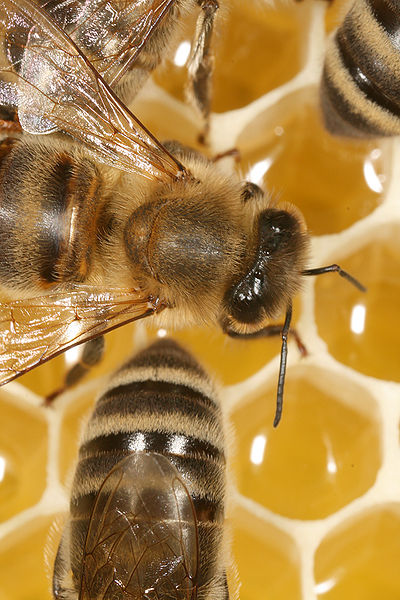 Boris - Yes. That's one of the ideas which we have that deeper knowledge about bee breeding, bee reproduction will help the bee industry to kind of breed better bees and to kind of ship semen samples around for artificial insemination programs, and we have an artificial insemination lab here so we're actually involved in-breeding of more bees or bees of better quality.
Boris - Yes. That's one of the ideas which we have that deeper knowledge about bee breeding, bee reproduction will help the bee industry to kind of breed better bees and to kind of ship semen samples around for artificial insemination programs, and we have an artificial insemination lab here so we're actually involved in-breeding of more bees or bees of better quality.
Chris - So you're effectively creating a bee sperm bank.
Boris - Yes, to a certain degree. The advantage of the bee sperm is that you can keep it in a glass vial for a very long time. It survives for a couple of months without help and at room temperature. So, if you need a lineage which has an increased tollerance or resistance against a parasite, and that's at the moment a big issue, then you can - instead of importing bees which is always risky - you can import semen. For some of the more dangerous diseases that travel around the world in the bees like the Varroa mite or the hive beetle we know that's not present in semen. So we have a lower risk of importing something which we don't want to have here.
Chris - Bee Biologist, Boris Baer - he's from the University of Western Australia.
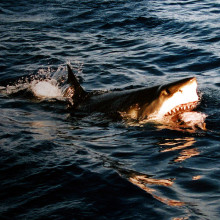
49:16 - Does Burley Change Shark Behaviour?
Does Burley Change Shark Behaviour?
with Charlie Huveneers, Flinders University, Adelaide
Charlie - So we're looking at the impact of burling - burling being the provision of bait in the water to attract the sharks so that people can undertake cage diving with white sharks for example. We're trying to look at how that burling might impact the behaviour of white sharks. And previous studies have shown that whereas people previously felt the sharks will be conditioned to the burley, the opposite is actually happening where we've got a level of habituation. So what I mean by that is instead of the sharks being attracted by the boat, because of the burley, the sharks get used to the burley, and basically don't react to the burley as much as they did previously. 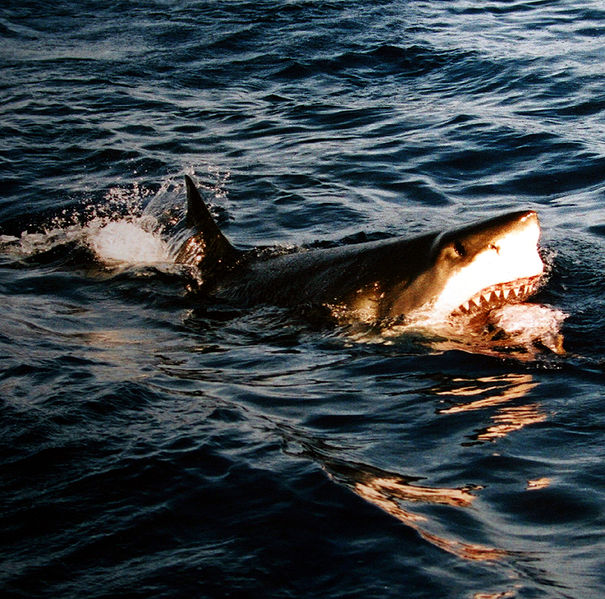 So if you've got a shark that arrives in an area on the first day of burley, that shark might be attracted to the boat and come around the boat, and be able to be seen by the tourists. After a few days, we know the shark is still in that area through some of the tagging that we do, but it doesn't come close to the boat anymore and that might be due to that habituation and the fact that even though there is burley in the water, there's no reward because the sharks are not being fed by the bait. The bait is being removed on time.
So if you've got a shark that arrives in an area on the first day of burley, that shark might be attracted to the boat and come around the boat, and be able to be seen by the tourists. After a few days, we know the shark is still in that area through some of the tagging that we do, but it doesn't come close to the boat anymore and that might be due to that habituation and the fact that even though there is burley in the water, there's no reward because the sharks are not being fed by the bait. The bait is being removed on time.
Chris - It's a bit like me being attracted by the smell of coffee because I love coffee so I flock to wherever the smell is coming from. Don't get a coffee. Therefore, in the future, I might ignore the smell of coffee.
Charlie - Exactly and there's many other example we can also be using, but that's a good example.
Chris - And obviously, if you start to impact on the behaviour and preferences of a shark like that, it could have impacts presumably on its physiology and on its health.
Charlie - You can have a wide range of impact and you can potentially change some of the behaviour of the sharks which we have to be careful of. It is a relatively large industry here in South Australia, but also around the world. There's cage diving operations happening in South Africa, but also in Guadalupe as well and so, it has implications internationally, and we're just trying to ensure that this kind of operation doesn't impact on the shark but also that the tourists can enjoy this interaction with the wild shark as well. So the more we learn about the sharks, the more we can ensure that this operation is managed sustainably.
Chris - So is there a better way of doing it? Is there a way of attracting the sharks and rewarding them so that they are not being harmed in this way or are you just trying to understand whether we are harming them and therefore, whether we need to do things differently?
Charlie - At the moment, we're trying to understand if we are harming them, but the sharks aren't supposed to be fed during cage diving operations. It's only the smell that would attract the shark to the area. So we're trying to ensure that this activity doesn't really impact on the shark.
Chris - Is there any evidence that it does?
 Charlie - I guess so far, we don't really know and that's the exciting thing about it - we're looking at something that we don't fully understand yet. I guess the important thing is that - we know that the sharks would be there for a reason, but does the burling impact on the reason that they are there? That's what we want to make sure, that we're not changing the reason why they're there, and we know that the sharks still do what it's supposed to be doing while they're there, because they are there for a reason which we don't fully understand. We just don't want to change that.
Charlie - I guess so far, we don't really know and that's the exciting thing about it - we're looking at something that we don't fully understand yet. I guess the important thing is that - we know that the sharks would be there for a reason, but does the burling impact on the reason that they are there? That's what we want to make sure, that we're not changing the reason why they're there, and we know that the sharks still do what it's supposed to be doing while they're there, because they are there for a reason which we don't fully understand. We just don't want to change that.
Chris - And how are you trying to explore that?
Charlie - We're using a variety of techniques, mostly related to acoustic telemetry. Acoustic telemetry uses a combination of receivers and tags which you can put on a shark either internally or externally and it gives us a finer scale movement and resonance time which is the amount of time a shark spends in one area. I've got one of the tags here if you want to have a look at it.
Chris - Sure, go on.
Charlie - So this is one of the acoustic tags. There's two different types of acoustic tags, what we called coder tags and continuous tags. This one is a continuous tag so every second a pulse is being sent that is being received by the receivers, by the listing stations, and which can then give us the location of where the shark is.
Chris - They're not very heavy. It's quite light. It's 6 inches long with a slightly bulbous end. I presume there's a battery in there and then there's the thing that produces the signal that you're then able to pick up.
Charlie - So that bulbous end is actually just a float so that that when we insert it in the shark, it doesn't rub on the skin of the shark and just stays floating on top of it, and this is actually the tag here that has a battery life for this type of tag of about 40 days, but a coder tag that sends a pulse less often will have a battery life of up to 10 years. So we can get information about the movement of sharks for up to 10 years which is really interesting.
Chris - And how do you stick it on?
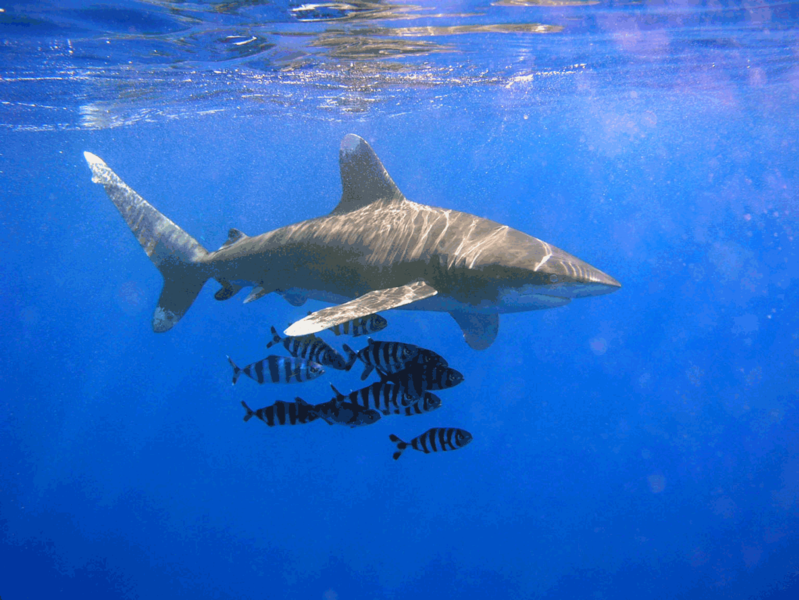 Charlie - We'll just use a modified end of a spear and as a shark swims by the boat, we just insert it next to the dorsal fin of the shark.
Charlie - We'll just use a modified end of a spear and as a shark swims by the boat, we just insert it next to the dorsal fin of the shark.
Chris - So it goes under the skin?
Charlie - That's right. It goes into the muscle. This anchor barb here, this goes underneath the skin and the tag itself actually floats just next to the skin of the shark.
Chris - No harm to the shark?
Charlie - Nothing especially in comparison to some of the mating that the sharks have where the male will bite by the female quite hard. So this is pretty much nothing compared to that.
Chris - That sounds like quite an interesting love life. So where do you record the acoustic telemetry points from? Have you got listening posts out at sea and you're therefore resolving trigonometrically where the sharks are in any area in real time so you can keep a sort of 24-hour log if you like, of a shark in that area?
Charlie - That's exactly right. We've got two different systems and one of them is this. It's what we call a VRAP which is a Vemco Radioacoustic Positioning System - a bit of a mouthful! What it does, it's got three receivers that calculate the position of the shark using the difference of the time of arrival. So, basically triangulation and the accuracy of that system is amazing. It would give us an accuracy of about a meter. So we will know within a meter where the shark is and basically how it interacts with the different boats during the cage diving. So we can look at the time partitioning which is the amount of time the shark spends next to each of the boats, to see how the burling changes the behaviour of the shark. Did the shark spend its entire time next to one boat or does it share its time between the two boats? So that if you want to add more boats, you know, will the shark just spend this entire time with one of the five boats in one area? In which case, the other boats might start trying to burly more and more to attract that one shark but because you've got some habituation happening, the shark's going to be less and less responsive to that burling so it's going to stay to that one boat. So the other boat is going to use even more burly and they've got this kind of feedback and it's an escalating effect that might have large ramifications and consequences for the sharks.
Chris - Any surprises emerging yet or is this early days?
Charlie - It's early days at the moment and actually I'm quite excited. We've tagged a few sharks. In a couple of days, I'm going back there to download the data. So, I'm really excited to try to find out what we've found so far and hopefully provide us with good data and good results to be able talk about it.
Chris - Charlie Huveneers - he's from Flinders University in Adelaide.
Related Content
- Previous A New Look for Corneal Transplants
- Next Gold, storms and dinosaurs









Comments
Add a comment